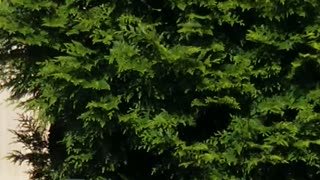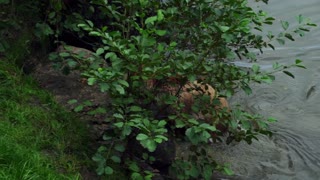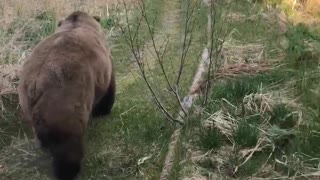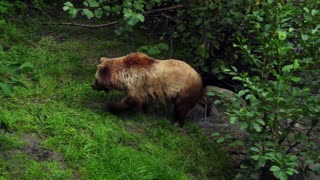Brown bear walk
In the past, the brown bear was common throughout Europe, including England and Ireland, in the South its range reached North-West Africa, and in the East it reached Japan. It probably came to North America about 40,000 years ago from Asia, across the Bering isthmus, and spread widely in the Western part of the continent from Alaska to Northern Mexico.
Now the brown bear has disappeared in most of its range; in other areas it is small in number. In Western Europe, it has fragmented populations in the Pyrenees, Cantabrian mountains, Alps, and Apennines. It is quite common in Scandinavia and Finland, found in the forests of Central Europe and the Carpathians. In Finland, it is a national animal.
In Asia, it is distributed from Palestine, Northern Iraq and Iran to Northern China and the Korean Peninsula. In Japan, it is found on the island of Hokkaido. In North America; it is abundant in Alaska, Western Canada, and there are limited populations in the northwestern United States. The brown bear is omnivorous, but its diet is 3/4 vegetable: berries, acorns, nuts, roots, tubers, and grass stalks. In the years of poor berry harvest in the Northern regions, bears visit oat crops, and in the southern regions — corn crops; in the far East, they feed in the cedar forests in the fall. Its diet also includes insects (ants, butterflies), worms, lizards, frogs, rodents (mice, marmots, ground squirrels, chipmunks) and fish. In summer, insects and their larvae sometimes make up 1/3 of the bear's diet. Although predation is not an approximate strategy of brown bears, they also prey on ungulates-ROE deer, fallow deer, elk, deer, and caribou (most often this happens in early spring, after the bear comes out of hibernation, when there is still very little plant food). Grizzlies sometimes attack wolves and baribal bears, and in the far East, brown bears can sometimes hunt Himalayan bears and tigers. The brown bear loves honey, eats carrion, and uses its size advantage to take prey from other predators such as wolves, Cougars, and tigers. Seasonal food items are fish during spawning (passing salmon), in early spring — rhizomes, in summer — butterflies that hide in the mountains among the stones from the summer heat. When the fish is just beginning to arrive for spawning, the bears eat the whole fish caught, then start eating only the fattest parts — the skin, head, caviar and milk. Seasonal cyclicity of life is pronounced. By winter, the bear builds up subcutaneous fat (up to 180 kg) and in the fall lies in the den. Dens are located in a dry place, in most cases in holes under the protection of a windfall or under the upturned roots of trees. Less often, bears dig shelter in the ground or occupy caves and rock crevices. Bears have their favorite wintering grounds, where they gather from year to year from the whole district. In different regions, winter sleep lasts from 75 to 195 days. Depending on climatic conditions, bears are kept in dens from October-November to March-April, 5-6 months. Bears and cubs live the longest in dens, and old males live the least. In the South of the range, where the winter is not snowy, bears do not hibernate at all, but also accumulate fat reserves, since in these places the amount of food decreases in winter. During the wintering period, the bear loses up to 80 kg of fat. Despite its clumsy appearance, the brown bear can run fast — at speeds of up to 50 km / h, swims excellently and climbs trees well when young. With one blow of the paw, a Mature bear can break the back of a wild boar, deer or elk. Meeting a brown bear can be deadly
-
 1:04
1:04
World around us
2 years agoCat and Mouse
689 -
 0:26
0:26
Bos
3 years ago $0.73 earnedBrown Grizzly Bear
1.15K3 -
 0:26
0:26
dwsurf
3 years ago $0.02 earnedBrown Bear or Chocolate Lab?
1171 -
 1:15
1:15
Miye
3 years ago $0.52 earnedBrown Bear Free
713 -
 0:41
0:41
KTNV
3 years agoAlaska brown bear runs for president of zoo
1.98K2 -
 0:43
0:43
ViralHog
3 years ago $0.03 earnedKatmai Brown Bear Poses for Quick Photo
202 -
 1:06
1:06
ViralHog
3 years ago $0.31 earnedBrown Bear Snatches Sockeye Salmon From Fisherman
3.75K1 -
 1:15
1:15
Kostya2106
3 years ago $0.21 earnedbrown bear in all beauty
1K1 -
 0:23
0:23
ViralHog
3 years ago $0.07 earnedBrown Bear Scales Tree to Get a Snack
1.42K1 -
 1:19
1:19
RealShowNow
3 years agoR.E.A.L: Lateral Bear Walk
42